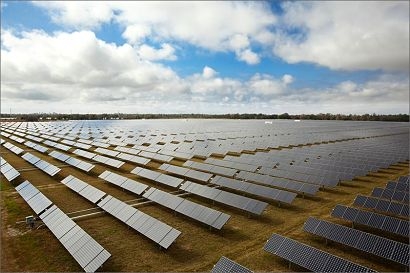
This is the key finding of the new paper “PV installs explode despite hurdles – jump 87 GW, more to come”, published today (30th September) by Rethink Energy.
By the end of Q1 US installs seemed to be down by over 50 percent, before President Biden stepped in with his Emergency Authority to break the deadlock.
“The great bulk of global solar installations are still in China which added 30.2 GW in H1 and will add a further 55.9 GW during the rest of the year, for full-year growth of 56.9 percent” said Andries Wantenaar, Rethink Energy solar analyst and lead author of the report. “This means China is 38.4 percent of global installs and rising.”
Rethink Energy tracks data from twenty leading national markets and says that global solar installations were 40.4 GW in Q1, followed by 46.6 GW in Q2. Those figures are up 32.4 percent and 50.6 percent year-on-year respectively.
As such Rethink Energy has raised its forecast for 2022 from 204 GW to 224 GW for the whole of 2022. The Indian market is also up 53.5 percent, and the US up 18.1 percent despite its total near blockage of imports for Q1. The eight European markets tracked by Rethink Energy added 12.8 GW and will add a further 17.8 GW for the second half of the year, rising 48.1 percent.
Latin America added 7.1 GW in H1 and will add another 12.2 GW, for full-year growth of 26.1 percent, while the East Asian Periphery – Japan, Taiwan and South Korea – added only 6.2 GW and will only add another 5.8 GW, a decline of 1.7 percent.
The biggest accelerations in European PV deployments are in Germany and Poland. Germany has risen to 4th place worldwide and will maintain that position – with Poland close behind in 5th place, possibly even overtaking Germany next year. Japan will fall to 7th place behind Brazil.
India and China are both energetically bringing in new subsidies and incentives, but behind these countries with the highest year-on-year growth are almost all European.
Not only will South Korea and Japan decline, but in Australia the decline could be higher, as much as 15 percent. Investment has been flagging for several years there and the anticipated resurgence will not yet be reflected in H2 figures.
Polysilicon, the great bottleneck on PV production for the past year and the source of almost all of price increases, is being ramped up dramatically growing by 5.6 percent each month during the first half of 2022, but prices have remained high. Wafer makers are using thinner slices of Polysilicon, reducing wafer thickness from 175 mm to 155 mm which will cut polysilicon consumption by 6 percent.
Chinese manufacturing now accounts for 80 percent of module and polysilicon, and 97 percent of the global total for wafers.
For additional information:

